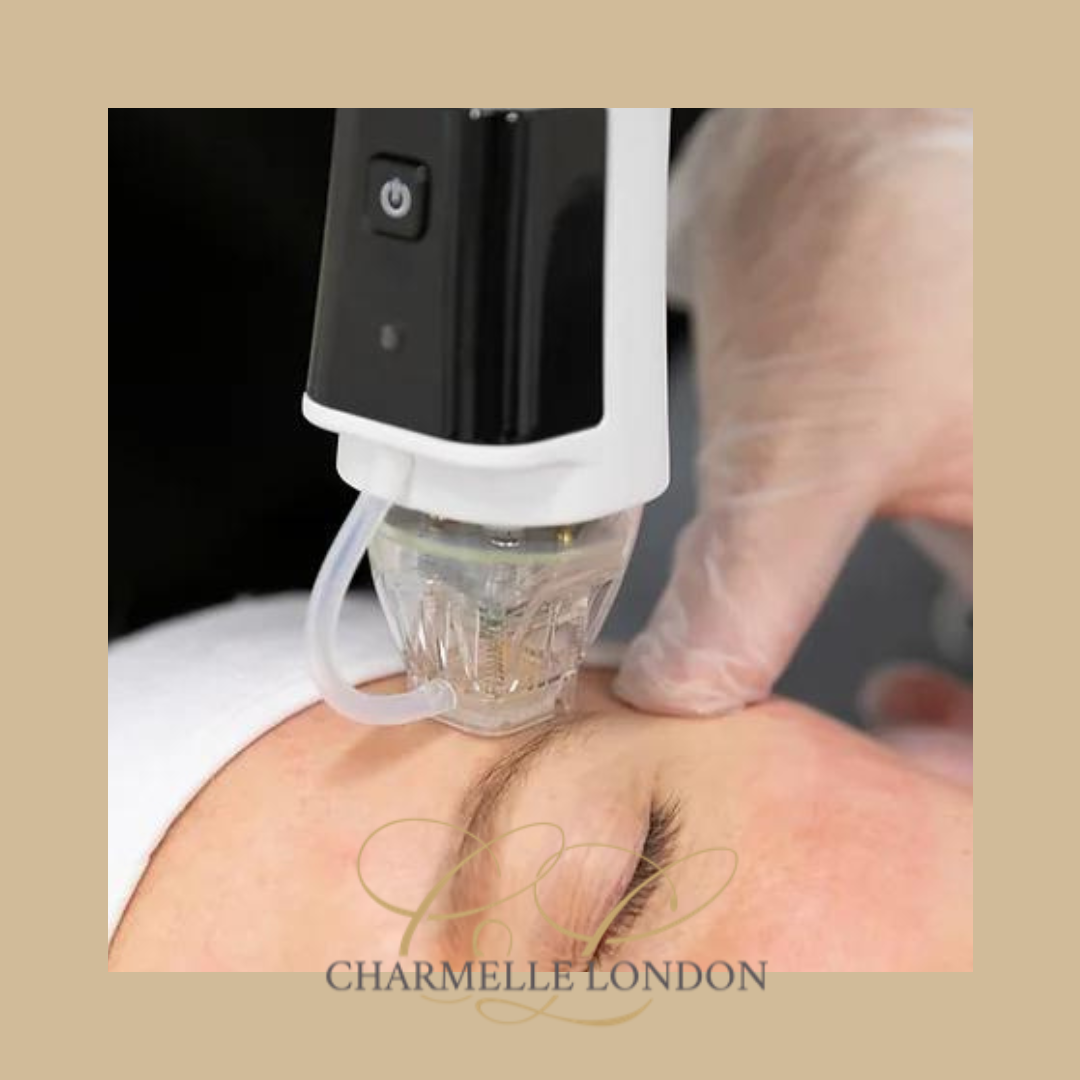Acne Scarring
Acne scarring at Charmelle London Our dermatology and acne experts can recommend a range of effective professional skin treatments designed to diminish the appearance of acne scars. From skin peels and laser resurfacing to the latest in fluorescent light treatment technology. There are a number of effective professional skin treatments designed to diminish the appearance of acne scars.
When acne is not treated quickly and effectively, it can leave scarring which can be difficult to treat. There are two main types of scarring – pigmentation (dark marks) left behind after acne, particularly in darker skins. Pitted (atrophic) scarring occurs when spots have caused deeper damage – this type is the most difficult to treat. Fortunately, Charmelle London have a wide range of treatments to choose from to suit your condition and schedule.
Acne scarring is usually an after-effect of cystic acne or inflamed blemishes. Some people are left with pigmentation (darker or lighter patches of skin) after their blemishes have healed, and some may be left with pitted facial scarring from acne, where the skin appears uneven and dimpled.
Frequently Asked Questions
Inflamed blemishes or acne such as cysts, papules and pustules can result in pitted acne scarring. This is because the cysts form on the bottom layers of the skin and when the cyst has healed it leaves behind a gap between the skin’s layers. The upper layers of skin above ‘sink’ to fill the gap, causing a pitted, dimpled appearance.
Acne scarring can’t always be prevented, but there are steps you can take to minimise the after-effects of acne, including:
- Protecting your skin from sun exposure
- Avoiding picking, squeezing or scratching your acne
- Seeking advice and professional treatments designed to target acne whilst it is active
- Medication
Usually, your reddish or brownish acne marks that are left behind after pimples clear up, and will fade with no need for treatment. However, picking or squeezing acne can increase the risk for scarring.
Some acne scars may be red, purple or pinkish in colour due to a buildup of melanin in the skin. If the area is red and is still inflamed and swollen, the acne is likely to still be active. A dermatologist will be able to advise you about effective treatments for active acne, which may help to minimise the risk of acne scarring.
Acne scars can be stubborn and seemingly permanent, but there are proven effective treatments available to diminish the appearance of acne scarring. The best treatment for your skin will depend on the type of acne scarring you have. Before you undergo any treatment, a dermatologist or skin expert should assess your acne scars and select the most appropriate treatment for you.




.jpg&w=3840&q=75)